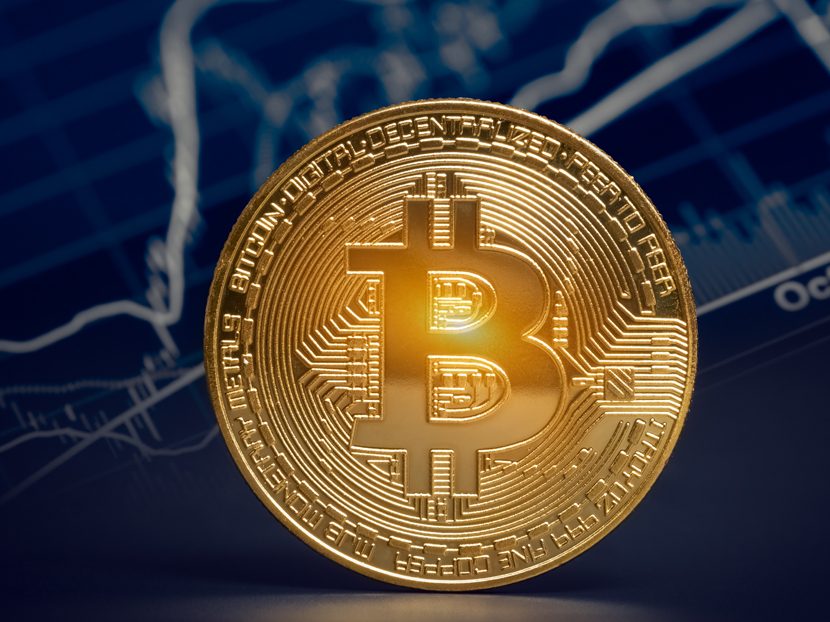Head Bound for Bitcoin?
As cryptocurrencies continue to gain traction, learning a little more about them might be a good idea.

My niece first heard about Bitcoin in 2008; you could buy a Bitcoin for 11 cents back then. She thought Bitcoin was used mostly to buy drugs and guns and for other clandestine activities. About a year ago, she was talking to a co-worker about his Bitcoin adventures, and she learned that it was selling for $600 a Bitcoin. Intrigued, she bought half a Bitcoin, for $300. Twelve months later she had $8,000 in her Bitcoin “wallet.” She just cashed out $6,000 and is letting the $2,000 ride.
“It’s all over the map,” she said. “The value goes up and down by hundreds of dollars, sometimes thousands, in a day. I still don’t know much about it. I figured I could lose $300, and it was an adventure worth pursuing.”
I bet you have a similar story of a friend or relative who is riding high on Bitcoin profits.
And it makes me wonder if I should buy some Bitcoin? Have you been thinking about it? Is it a good idea or big mistake? Maybe you’ve been also wondering, as I have, who takes Bitcoin for payment of services? Is this an underground currency, or is it the way we are heading, the inevitable next step? I decided to do a little research — on currency in general and cryptocurrency specifically.
Perhaps you’re thinking, “No thanks. Not interested. With digital currency, there isn’t really any there there. Not like good Ol’ USofA dollars.” Well, there is no there there either. Buckle up and read on!
A brief and oversimplified history of world currency:
As early as 560 BC, we know that the people of Lydia — present day Turkey — used gold coins as currency. From then on, the more gold you had, the richer you were.
From the 12th through the 14th centuries, the Knights Templar controlled a sophisticated banking system that used paper IOUs, and ledger entries, to record stashed gold and valuables for Crusaders as they marched across Europe. The paper represented the value of the gold and was much more travel-friendly.
In 1776, Adam Smith wrote The Wealth of Nations, and warned of the dangers of associating a country’s worth to a hoard of metal. He suggested that, instead, a county might be measured in terms of what it actually produced, what we now call Gross National Product. Radical stuff at the time.
After the Revolutionary War, the newly formed United States struggled with currency. Citizens juggled paper money (with fleeting moments of value), foreign coins (of gold and silver), and commodities (like beaver skins and tobacco) and bartered goods and services. As my niece would say, “All over the map.”
In the expanding United States, the Gold Rush of 1848 increased America’s gold holdings. At this time, the USA, as well as many other countries, wanted to standardize world markets. In 1861, Treasury Secretary Salmon Chase printed the first U.S. paper currency, and the U.S, adopted a gold standard, guaranteeing that the government would redeem paper money for its value in gold.
During WWI, some European countries abandoned the gold standard so they could just print more money to fund the war.
Franklin Roosevelt’s administration started to manipulate the U.S. gold reserves, the price of gold and the value of the dollar. The motivation, we are to believe, was to keep our economy functioning during the Great Depression, and in response, runs on banks and gold.
On August 15th, 1971, Richard Nixon formally ended the U.S. gold standard. As of today, no currency on earth is attached to a gold standard. The Swiss Franc, the last holdout, decoupled from gold in the year 2000.
In other words, there isn’t any there anywhere. The world today functions on the belief in the value of each country’s currency. Granted, the markets are regulated. The tax structures are complicated, and flawed. In the U.S., the Federal Reserve controls the flow of money. Still, in large part, it works because people believe it works and act accordingly.
And, in walks Bitcoin.
In the 1990s the concept of digitalized, unregulated, decentralized currency popped up in newsletters for cryptographers, coders and computer programmers. Bitcoin started as “open source” software, with anonymous developers co-creating the program. On August 18th, 2008, the domain name www.Bitcoin.org was registered.
According to www.dictionary.com, Bitcoin is a type of digital currency in which encryption techniques are used to regulate the generation of units of currency and verify the transfer of funds, operating independently of a central bank.
Today, there are millions of dollars of Bitcoin exchanges daily. Total value of all existing Bitcoin: $20 billion U.S. The number of transactions per day changes dramatically, averaging about 300,000 per day over the last 6 months. Over 100,000 merchants across the globe accept some form of Bitcoin payment.
Here’s a very basic overview of the model.
Bitcoin is the currency. When you buy or sell something, the bitcoin moves from one user’s wallet to the other. Miners keep track of the transactions and secure the network. Miners do this by running software that verifies the transactions, with other miners in the network, chaining together blocks of transactions. This interconnected system is called Bitcoin’s blockchain. For this service, miners are “paid” with newly-created/released Bitcoins and transaction fees. New Bitcoin is released, based on a sophisticated algorithm, not unlike what the Fed does when it “prints money.”
The blockchain is “open source” software, and miners can make changes, as approved by developer, Gavin Andresen. (Though it is not universally accepted that Gavin is the man behind the curtain!) The miners may then upload the updated software, or not, helping maintain a cooperative version of the software, guided perhaps by what they think is best for the survivability, usability and value of Bitcoin.
Why get involved?
• You are curious, and you can gamble with $100 or whatever you are willing to lose. You can start small, and learn how it works.
• We are inevitably moving to cryptocurrency. As of January 2018, there are 1384 known cryptocurrencies, from Feathercoin to Tethr to Verge. You might want to stay ahead of the curve.
• You could welcome a new market niche by accepting Bitcoin for PHC goods and services sold.
• You already use and appreciate Venmo and PayPal and direct deposit banking transactions.
• Companies like Expedia, Microsoft, Subway and Whole Foods accept Bitcoin. Although, apparently not all outlets participate, and employee training is lagging. #typicalbitcoin
• The cryptocurrency foundational belief is that we can freely trade with one another without a regulated currency. If that kind of independence appeals to you, you might want to jump in.
Why not, or not yet…
• You just don’t understand it, and feel no need to be an early adopter. That’s where I was before I started exploring Bitcoin, and the history of currency. I’ve learned a lot and am inspired to continue.
• It’s so volatile. The value goes up, in part, with the number of transactions, and that number is wildly variable.
• If you lose your passcode, or key, you lose your Bitcoin. There is no “reset your passcode” option. There’s an oft repeated story online about the guy who lost his jump drive and his passcode, and $7.5 million in Bitcoin.
• The miners’ software drives the whole network, and the massive energy required to keep it all running appears unsustainable. Stay tuned on this one.
• You’re more comfortable with gold. (What is it with gold?)
I’m interested in the currency more than the wild-ride investment. There is something about gaining wealth from delivering a real product or service as opposed to purely passive investments. One of the reasons I LOVE plumbing and solar and drain cleaning is that there is some there there. Yet, I have no doubt we will someday accept Bitcoin at ZOOM DRAIN. And I don’t want that moment to sneak up on me.
See the infographic, too!
For more on the gold standard:
The Wealth of Nations, by Adam Smith, free on your Kindle app.
Also, search YouTube for Bitcoin for beginners.





